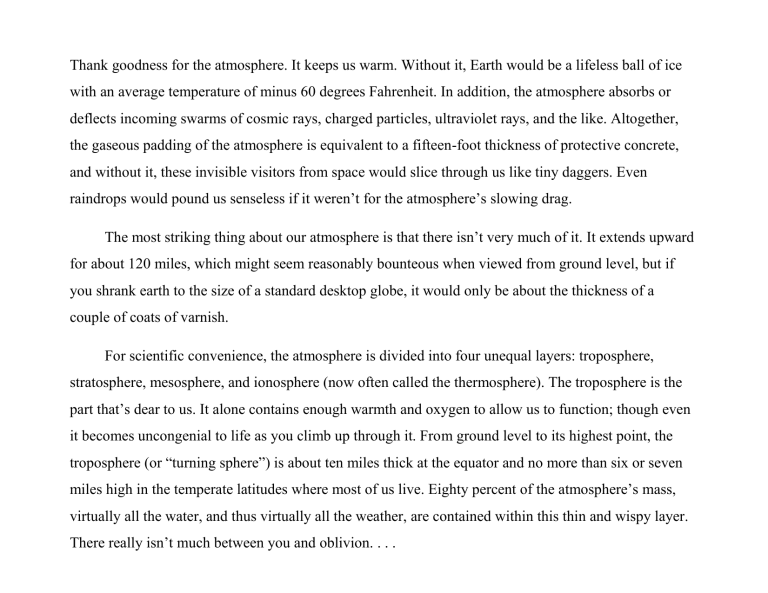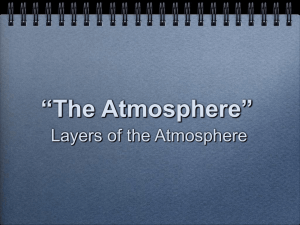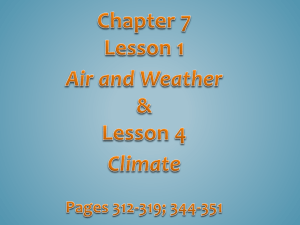Document 10730537

Thank goodness for the atmosphere. It keeps us warm. Without it, Earth would be a lifeless ball of ice with an average temperature of minus 60 degrees Fahrenheit. In addition, the atmosphere absorbs or deflects incoming swarms of cosmic rays, charged particles, ultraviolet rays, and the like. Altogether, the gaseous padding of the atmosphere is equivalent to a fifteen-foot thickness of protective concrete, and without it, these invisible visitors from space would slice through us like tiny daggers. Even raindrops would pound us senseless if it weren’t for the atmosphere’s slowing drag.
The most striking thing about our atmosphere is that there isn’t very much of it. It extends upward for about 120 miles, which might seem reasonably bounteous when viewed from ground level, but if you shrank earth to the size of a standard desktop globe, it would only be about the thickness of a couple of coats of varnish.
For scientific convenience, the atmosphere is divided into four unequal layers: troposphere, stratosphere, mesosphere, and ionosphere (now often called the thermosphere). The troposphere is the part that’s dear to us. It alone contains enough warmth and oxygen to allow us to function; though even it becomes uncongenial to life as you climb up through it. From ground level to its highest point, the troposphere (or “turning sphere”) is about ten miles thick at the equator and no more than six or seven miles high in the temperate latitudes where most of us live. Eighty percent of the atmosphere’s mass, virtually all the water, and thus virtually all the weather, are contained within this thin and wispy layer.
There really isn’t much between you and oblivion. . . .
But you needn’t venture to the edge of the atmosphere to be reminded of what hopelessly groundhugging beings we are. AS anyone who has spent time in a lofty city will know, you don’t have to rise too many thousands of feet from sea level before your body begins to protest. Even experienced mountaineers, with the benefit of fitness, training, and bottled oxygen, quickly become vulnerable at height to confusion, nausea, exhaustion, frostbite, hypothermia, migraine, loss of appetite, and a great many other stumbling dysfunctions. In a hundred emphatic ways, the human body reminds its owner that it wasn’t designed to operate so far above sea level.








